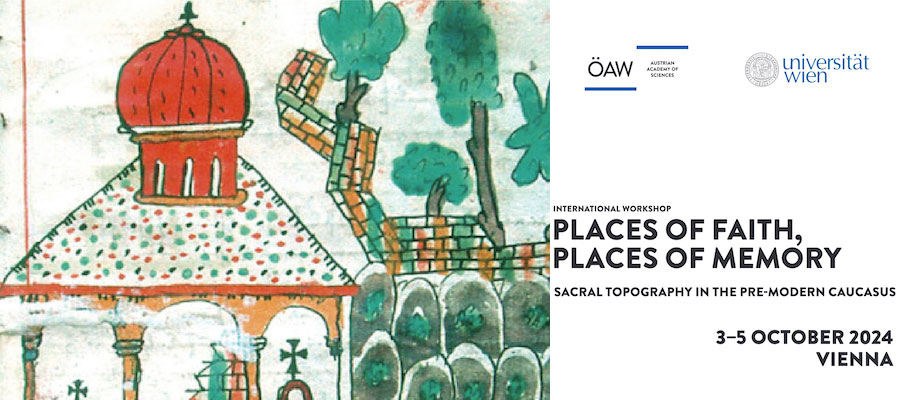Places of Faith, Places of Memory: Sacral Topography in the Pre-Modern Caucasus, Embassy of Armenia to Austria and Austrian Academy of Sciences, October 3–5, 2024
Creating or reviving sacral traditions of specific sites in the late ancient and medieval Caucasus, Armenian highlands, and Upper Mesopotamia was part of a process by which objects and material artifacts gained legitimacy. Regional literary sources such as Armenian and Georgian historiographies, geographies, chronicles, and 'minor' literary texts (poems, sermons, martyrologies, epistolography, travelogues and pilgrimage accounts), as well as archaeological and material evidence, show strategic and institutional approaches to construct, explain, and support the existence and propagation of socio-religious practices that were meant to legitimize a group or a position of authority through inclusion or alienation.
The construction of distinctly sacred spaces and examples of hierophany in the medieval Caucasus can be interpreted both on their own terms and within their wider environment. Hierotopic projects might evoke a wider Christian topography in a vast network of interwoven holy spaces, just as they might reflect the struggle for religious legitimacy and authority. The process of creating holy spaces, such as places of pilgrimage, and of locating relics in a specific geographical and cultural spaces served not only to establish or reinforce connections between the territory and the faith community (‘Glaubensgemeinschaft’) but also to delimitate the social and institutional borders between different religious and confessional identities.
Defining the sacral topography of the Caucasus as a multi-faith and interreligious space and drawing on inter-disciplinary research approaches, this workshop seeks to explore the history of hierotopy in the medieval Caucasus, the organisation and functionality of its sacred spaces, and their social, political, religious, economic, legal, gendered, cultural, visual, and material significance.
The workshop will run over two consecutive days in person on the 4th and 5th of October 2024, with a keynote talk and wine reception on the evening of the 3rd of October. The event will consist of four sessions on day one and two sessions on day two, with each session consisting of two one-hour presentation slots (40–45-minute papers and 15–20 minutes for questions). The languages of the workshop will be English and French.
